In the early afternoon of March 24, 2025, (today) Hossam Shabat's car moved through Jabalia in northern Gaza, fleeing due to being an active target by the IDF. The 23-year-old journalist for Al Jazeera was traveling without his press vest - a telling sign of how such protective markings have become more of a liability than protection for journalists in Gaza. Less than an hour earlier, he had posted about his colleague and friend Mohammed Mansour's death in another Israeli strike that morning in Khan Younis, southern Gaza.
At approximately 1:45 PM local time, the missiles came. Shabat had been tracked the whole time.
Shabat's death was not a random tragedy but the culmination of months of escalating targeting. On November 19, 2024, he had survived an earlier Israeli airstrike that left him injured. Just a week before that attack, eleven of his cousins had been killed in an Israeli bombardment of Al-Shati refugee camp in northern Gaza.
Most ominously, in October 2024, the Israeli military had publicly designated Shabat and five other Al Jazeera journalists as "terrorists," effectively marking them for elimination. The military claimed to have documents proving the journalists were members of Hamas or Palestinian Islamic Jihad – allegations Al Jazeera vehemently denied as "fabricated accusations" designed to silence the few remaining journalists in Gaza.
[PHOTO: Hossam Shabat’s final social media post about the death of friend and colleague Mohammed Mansour. Shabat was killed an hour later.]
[VIDEO: Hossam Shabat’s body carried away by witnesses]
![[PHOTO/VIDEO: Hossam Shabat’s body after missile strike on his car]](https://substackcdn.com/image/fetch/$s_!Jg1c!,w_720,c_limit,f_auto,q_auto:good,fl_progressive:steep/https%3A%2F%2Fsubstack-post-media.s3.amazonaws.com%2Fpublic%2Fimages%2Fd8c78e2d-009a-48b3-b02c-a524e9bd055d_766x1200.jpeg)
![[PHOTO/VIDEO: Hossam Shabat’s body after missile strike on his car]](https://substackcdn.com/image/fetch/$s_!RcX-!,w_720,c_limit,f_auto,q_auto:good,fl_progressive:steep/https%3A%2F%2Fsubstack-post-media.s3.amazonaws.com%2Fpublic%2Fimages%2F4d72dacd-baeb-4b8d-90ef-c9b03b158f2e_1200x1200.jpeg)
[PHOTOS: Hossam Shabat’s body after missile strike on his car]
The strike killed Shabat instantly, making him the 208th journalist to die covering Israel's military campaign in Gaza since October 7, 2023 – a death toll unprecedented in modern press history.
"Every inch of Gaza has a story to tell," a Palestinian journalist remarked recently. What remains unsaid: those attempting to tell these stories are themselves becoming casualties at an alarming rate.
Interviews with surviving journalists, press freedom advocates, and military experts reveal what appears to be a deliberate strategy to eliminate witnesses documenting the conflict – transforming the universal symbol of press protection into what one reporter called "a bullseye."
[VIDEO: Hossam Shabat reporting from a Gaza hospital]
[VIDEO: Hossam Shabat injured November 19, 2024 by IDF airstrike]
"PRESS" Markings: From Protection to Bullseye
Basel Khair Al-Din, a Palestinian journalist who survived a drone strike while wearing press identification, describes the cruel paradox facing reporters in Gaza: "Whereas this press vest was supposed to identify and protect us, according to international laws, international conventions, and the Geneva Conventions, it is now a threat to us."
The blue flak jacket with "PRESS" markings, once a safeguard in conflict zones worldwide, has become something Gaza's journalists increasingly avoid wearing.
Nagham Mohanna, reporting for The National, expresses this grim reality: "If you wear your flak jacket and your helmet, you have the press logo, and you are moving with a car that has the TV logo, even all of that doesn't protect you."
This reversal of protection reached its emotional nadir when Palestine TV reporter Salman Al Bashir removed his press vest on live television upon learning his colleague Mohammed Abu Hatab had been killed alongside 11 family members in an Israeli airstrike.
"We will get killed, it is just a matter of when…These uniforms and helmets don't protect us. Nothing protects journalists," Al Bashir declared as the studio anchor wept.
[VIDEO: Clip of Salman Al Bashir removing his press vest on air]
The Dahdouh Family: Annihilated by Israeli Strikes
No single story encapsulates the targeting of Gaza's journalists more dramatically than that of Wael al-Dahdouh, Al Jazeera's Gaza bureau chief.
On October 25, 2023, al-Dahdouh was broadcasting live when he received news that an Israeli airstrike had killed his wife, 15-year-old son Mahmoud, 7-year-old daughter Sham, and his grandson. The family had relocated to what was designated a "safe area" based on Israeli evacuation instructions.
[VIDEO: Wael al-Dahdouh at the hospital viewing his family members' bodies]
Yet within 24 hours, al-Dahdouh returned to broadcasting, explaining: "I saw that it was my duty, despite the pain and the bleeding wound, to return quickly and to meet you through the camera lens."
The tragedy continued. On December 15, 2023, while covering an airstrike in Khan Yunis, al-Dahdouh was injured by an Israeli missile, and his cameraman Samer Abu Daqqa bled to death after ambulances were prevented from reaching him.
Then on January 7, 2024, an Israeli airstrike killed al-Dahdouh's eldest son Hamza, also an Al Jazeera journalist, along with colleague Mustafa Thuraya. After the Israeli military claimed the journalists were terrorists, a Washington Post investigation confirmed they were using their drone for legitimate journalistic work.
Despite these devastating personal losses, al-Dahdouh continued reporting. "It is true that the pain of losing someone is very difficult," he told NBC News. "But we are going to proceed as long as we are alive and breathing."
[VIDEO: Wael al-Dahdouh speaking about continuing his work despite his losses]
Deliberate Elimination: Evidence of Israeli Targeting
According to Reporters Without Borders (RSF) data from September 2024, among the more than 130 journalists killed in Gaza at that time, at least 31 cases provided sufficient evidence to confirm they were directly targeted because of their profession. By March 2025, the death toll had risen to 208.
The Israeli military has openly acknowledged in some cases that it deliberately assassinated journalists, including Ismail al-Ghoul, Ramil al Refee, and Hamza Dahdouh. When the military later claimed al-Ghoul was a Hamas member since 2007, Mohammed Othman from the Skeyes Center for Media Freedom pointed out a glaring inconsistency: "In 2007, Ismail al-Ghoul was 10 years old."
Beyond direct strikes, the strategy includes methodical dismantling of Gaza's media infrastructure – destroying newsrooms, cutting internet and electricity, blocking foreign press entry, and requiring military escorts and pre-broadcast reviews for the few international journalists allowed embedded access with Israeli forces.
"The targeting and restrictions on any media in Gaza and then these targeted embeds [with Israel's military] shows this multifaceted campaign to have a media blackout to restrict coverage and to diffuse criticism about what the Israeli military is doing," explains Jonathan Dagher from RSF.
Chain of Command: Who Orders Journalist Killings
The strategy of targeting journalists and orchestrating a media blackout appears directed from the highest echelons of the Israeli government.
According to Reporters Without Borders, "Israeli forces have methodically destroyed the Palestinian territory's media infrastructure and stifled journalism" since the war began, implementing what they describe as a deliberate "media blackout."
This strategy became increasingly formalized in October 2024, when Israel's military publicly labeled six Al Jazeera journalists as "Hamas and Islamic Jihad terrorists" – including Hossam Shabat. Despite providing no credible evidence, this official designation essentially marked these journalists for elimination. Within five months, Shabat was dead by targeted assasination.
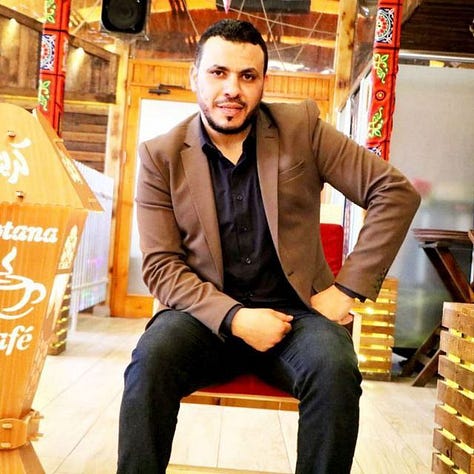
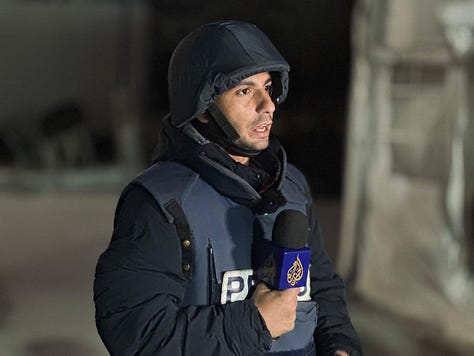
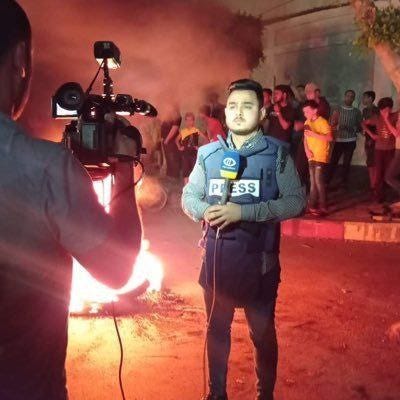
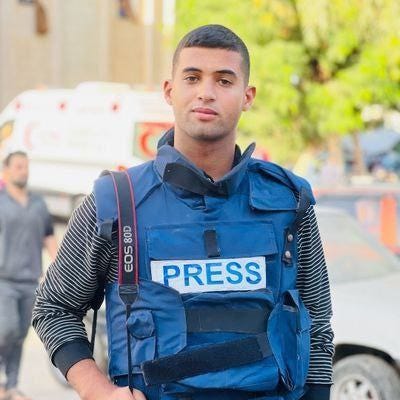
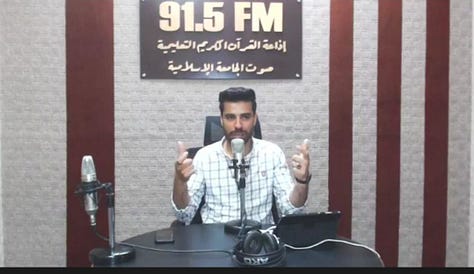
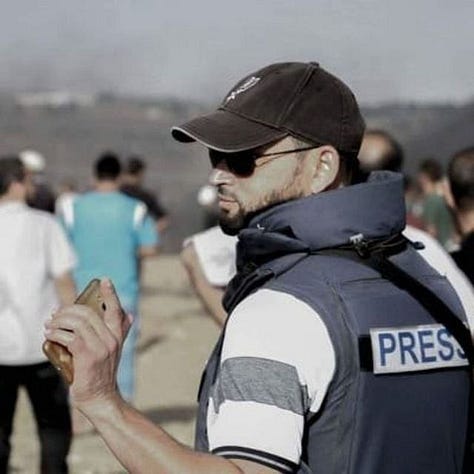
Prime Minister Benjamin Netanyahu and former Defense Minister Yoav Gallant (who was dismissed on November 5, 2024) both "face recommendations from the International Criminal Court prosecutor that they be arrested for alleged war crimes in their leadership of Israel's Gaza onslaught."
Netanyahu's recent dismissal of Defense Minister Gallant highlights tensions over war strategy. Netanyahu cited "significant gaps" and a "crisis of trust" between them, saying: "In the midst of a war, more than ever, full trust is required between the prime minister and defense minister."
Before his firing, Gallant had publicly criticized Netanyahu for "indecision" and leading Israel down a "dangerous course." After his dismissal, Gallant reportedly told families of Israeli hostages that the military had achieved all its objectives in Gaza and that Netanyahu was responsible for holding up a ceasefire deal.
[PHOTO: Netanyahu and Gallant in earlier, more unified days]
Not Accidents, But Strategy: Industrial-Scale Journalist Killings
Specialists in international humanitarian law note that deliberate targeting of journalists constitutes a war crime. The unprecedented scale of media casualties in Gaza suggests not isolated incidents but a strategic decision.
The mortality rate for media workers in Gaza exceeds 10 percent according to the International Federation of Journalists – dramatically higher than any other occupational group in an already devastating humanitarian crisis. Seventy-five percent of all reporters killed worldwide in 2023 were killed between October 7 and the end of that year.
These statistics, combined with military practices that specifically target clearly marked press personnel and vehicles, point toward what experts describe as an intentional effort to eliminate witnesses and control the narrative of the conflict.
Beyond Bodies: The Deeper Cost of Killing Journalists
When a journalist is killed, more than an individual life is eradicated. Each assassination represents an attack on our collective right to know, to witness, and to hold power accountable. The systematic killings of journalists in Gaza, combined with Israel's global media manipulation while denying Palestinians their own voice, represents a dangerous duplicitous double standard that tears the fabric of an informed global society. The world cannot function without witnesses - and that is precisely what makes Israel's strategy so predatory and perilous.
A World Without Witnesses: The Ultimate Goal of Journalist Elimination
As journalist Ahmed Mhawish, who fled Gaza after receiving threats, observed: "If a journalist in Gaza drops their camera or their pen, there would be nobody else to pick up the work that's left to be done."
This appears to be precisely the point. A conflict without witnesses becomes a conflict without accountability.
When the blue vests that once protected journalists become targets that endanger them, when families of reporters are killed to apply pressure, when falsely labeling journalists as terrorists precedes their assassination – these actions collectively represent not mistakes of war but choices that demand scrutiny.
For Nour Swirki, a freelance journalist and mother of two, the reality is stark: "I don't feel safe at all with the press vest. As journalists here, it is considered part of the danger and risk, to wear this vest."
In the shadows of Gaza's ruins, 208 silenced journalists leave behind not just grieving families but an ominous question for global press freedom: What happens when those who bear witness become the targets? International law hasn't protected these journalists, and their systematic elimination sets a chilling precedent that threatens the foundation of independent journalism worldwide.
[PHOTO: Hossan Shabat]














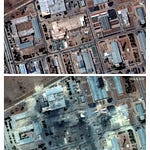


Share this post